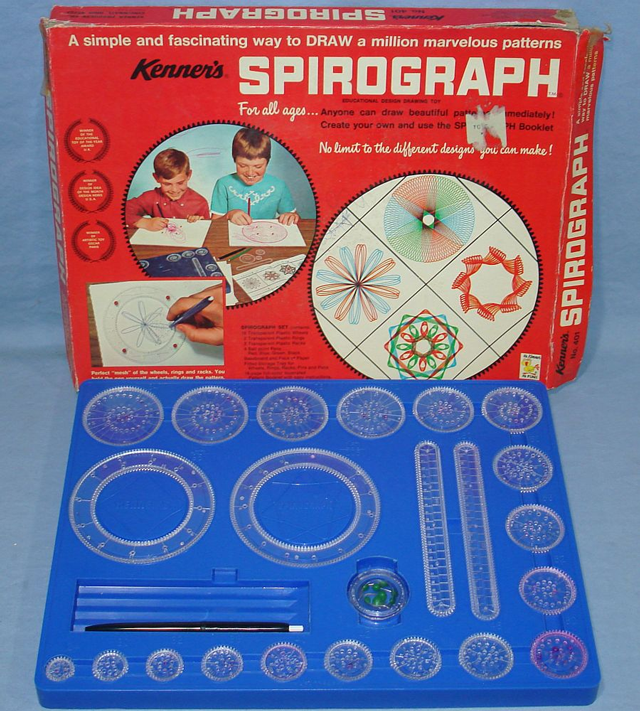On Laser GaGa and beautiful mathematics.

I often credit my aesthetic sensibilities to growing up in the beautiful Rockies, but maybe they’re due instead to the Spirograph. As a kid in the 70s, I loved this toy. Really, really loved it. I can’t even begin to count the number of snowy nights spent making mathematically-inspired doodles.
I almost forgot the game existed until I went with Michaela to see a laser show (Laser GaGa this time) at the Pacific Science Center in Seattle this weekend. Have you ever been? If not, you should go, especially if you’re one of my Seattle friends reading this and have no excuse not to.
Lying there on the floor under the geodesic dome (designed by Buckminster Fuller for the 1962 World’s Fair – !!), listening to the vibrating throbs of Lady GaGa, we were transported by the amazing laser forms, many of which looked to be straight from a Spirograph. Which I found especially fascinating for their mathematical components and symmetrical beauty. So of course, I came home and researched a little. I learned that the Spirograph game was created by a British engineer in 1965 and is based on the mathematical curves of hypotrochoids and epitrochoids. But the most interesting Spirograph-related thing I found was this work done by dancer Tony Orrico:
Most of us played with Spirographs at some point in childhood. The simple set of plastic shapes that made awesome geometric designs on paper never failed to amuse us – at least for a few minutes at a time. Dancer and artist Tony Orrico has never lost his love of Spirograph – in fact, he enjoys the mathematical shapes and unique works of art so much that he has turned himself into a human Spirograph.
 Original Kenner’s Spirograph. Photo via www.vintagetoysillustrated.com.
Original Kenner’s Spirograph. Photo via www.vintagetoysillustrated.com.